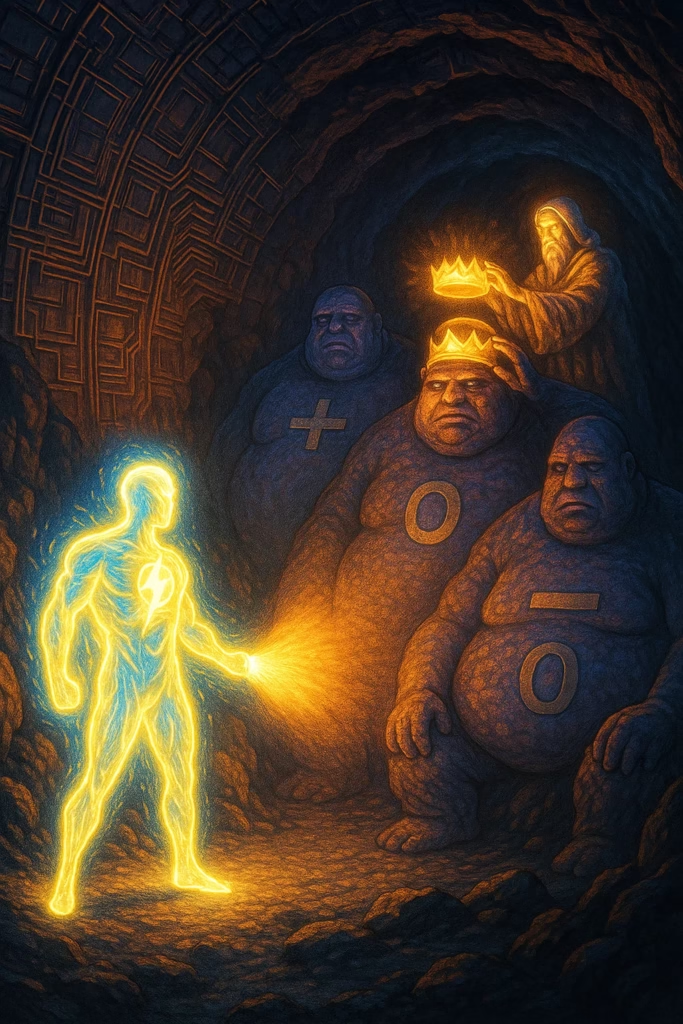🔬 The Atomic Nucleus: Where Electromagnetism Capitulates
At the heart of every atom lies a nucleus – an unseen tiny sun around which electrons dance. This nucleus is made of protons (positively charged) and neutrons (neutral). However, this is the place where the classical forces known to physics up to that point cease to apply:
- The electrostatic repulsion between protons should tear the nucleus apart
- The strong nuclear force holds the nucleus together – but it is not enough to explain everything
⚛️ Strange Decays: Traces of a New Force
Physicists noticed inexplicable processes:
- A neutron spontaneously decays into a proton, an electron, and something invisible
- A proton within a nucleus can transform into a neutron while emitting a positron
These processes could not be explained by either the electromagnetic or the strong force. A third, weak force, was needed.
🌌 The Weak Force: The Most Elusive Force of Nature
The weak force is unique in its properties:
- Incredibly short range: ~10⁻¹⁸ meters (a billionth of a billionth of a meter)
- Mediators: Three new particles – W⁺, W⁻, and Z⁰ bosons
- Companion: The neutrino – a particle with no charge and almost no mass that “carries” energy during decays
🔍 Why Such a Short Range?
The key lies in the mass of the W and Z bosons. While the photon has no mass and can travel infinitely far, these bosons are very sluggish – W and Z have a mass ~100 times greater than a proton! This limits their range to incredibly small distances.
🔄 Electroweak Unification: A Brilliant Idea
In the 1960s, physicists observed an astonishing similarity:
- The mathematics describing the weak force was almost identical to that for electromagnetism
- Revolutionary idea: At very high energies (like immediately after the Big Bang), these two forces were one and the same – the electroweak force
- At those energies, photons and W/Z bosons were massless and had the same properties
🤔 The Problem: Why are W and Z so massive today?
This was the theory’s biggest challenge. The answer came from Peter Higgs:
🧩 The Higgs Mechanism: The God Particle
Higgs proposed that there exists:
- A Higgs field that fills all space like an invisible “resistance”
- Particles that interact with this field gain mass
- Photons do not interact with the Higgs field – that’s why they are massless
- W and Z bosons interact strongly – that’s why they are so massive
The particle of this field – the Higgs boson – earned the nickname “God particle” because it gives mass to all other particles.
🏆 Experimental Confirmation: The Pinnacle of Modern Physics
In 2012, after decades of searching:
- The Large Hadron Collider (LHC) detected the Higgs boson
- Energies of 13 TeV enabled its creation
- This was the crowning achievement of the Standard Model of physics
🔮 What’s Next? The Dark Side of the Universe
Our hero – the photon – has found its lost brethren (W, Z, Higgs). But the story isn’t over:
- Dark Matter (27% of the Universe) – does not emit light
- Dark Energy (68% of the Universe) – accelerates the expansion of the cosmos
- Dark Photons – hypothesized particles that could mediate dark forces
In the next post: How do these “dark” components overturn our picture of reality?


Leave a Reply